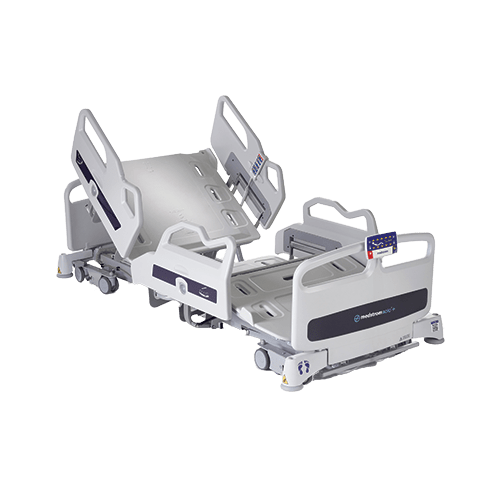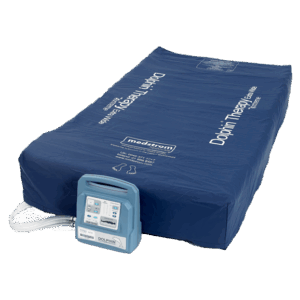
Managing Pain with a Support Surface
Pain can be an emotional and personal experience that many caregivers have to manage when caring for a patient. Pain, sleep and overall well-being are linked closely together, with several healthcare professionals citing the impact they can have on each other:
“Pain is a physical and emotional signal of bodily harm that strongly motivates behaviour. Sleep is a behaviourally regulated drive that broadly serves to maintain homeostasis and optimise function across multiple physiologic systems. Humans require both pain and sleep for survival; however, chronic impairments in the systems regulating pain and sleep can have a broad negative impact on health and well-being”1
Pain is often treated through analgesia, however, a caregiver may also want to consider other factors that may have an impact on a patient’s pain/comfort levels. Questions may include:
- Are they positioned comfortably on a bed frame?
- Has the auto-contour position been used?
- Are they on the right comfort settings on their mattress?
- Are there other options available in terms of a support surface that could make a patient more comfortable?
Jacqui Fletcher once discussed a personal experience upon mattress choice and comfort:
“I thought about the importance of skin care, and, most importantly, watching him trying to get comfortable made me question the mattress that we all put so much faith in […] I also became a witness of the benefits of touch, which should not be overestimated, and saw first-hand how painful incontinence-associated disease (IAD) can be; especially when combined with an uncomfortable mattress that a fidgety patient could get stuck in”2
Is a support surface an element of care that is overlooked as a method in helping to manage a patient’s pain, comfort levels and ultimately sleep and well-being?
Dolphin Therapy
During my time working for Medstrom, I’ve been fortunate enough to be involved in the collection of testimonials, case studies and outcome reports for Dolphin Therapy. The wealth of evidence, testimonials and feedback we receive speak volumes for the difference Dolphin Therapy makes to both caregivers and patients, but the ones that I always have an emotional connection towards are those that recollect the difference Dolphin Therapy has made to a patient’s quality of life. Comments such as:
“Dolphin Therapy has been wonderful; it has made her so comfortable for the first time in seven months, and her quality of life has changed drastically.”
The 1,000 patient outcome study we published testifies this with 99% of patients having their objective for improvement and comfort being met. We also captured an emotional testimonial from a Ward Manager on a Palliative Care Unit that again emphasises the difference a support surface can make to well-being: https://www.youtube.com/watch?v=Wv9LhcCtvVU&feature=emb_title
Why can Dolphin Therapy help to manage pain? Due to the simulated fluid environment, patients are fully immersed and enveloped, experiencing no periodic shifts in cells inflating/deflated as experienced on traditional dynamics. The mechanism of action of cells alternating have been known anecdotally to exacerbate pain/discomfort levels. The peaceful experience of laying in a flotation tank or sea is mimicked, and caregivers can be assured that the patient is being protected from skin damage, even if repositioning due to pain may be contraindicated.
Dolphin Therapy can be rented on a patient-specific basis for patients who may be struggling with pain management, comfort or sleep due to their clinical condition or chronic illness.
Read more about Dolphin Therapy and its further clinical benefits here.
References:
- Patrick H Finan 1, Burel R Goodin, Michael T Smith (2013) The association of sleep and pain: an update and a path forward. J Pain 2013 Dec;14(12):1539-52. doi: 10.1016/j.jpain.2013.08.007.
- Jacqui Fletcher (2019), Some notable changes, the importance of touch and the PU data capture, Wounds UK, Vol 15, No 2.











